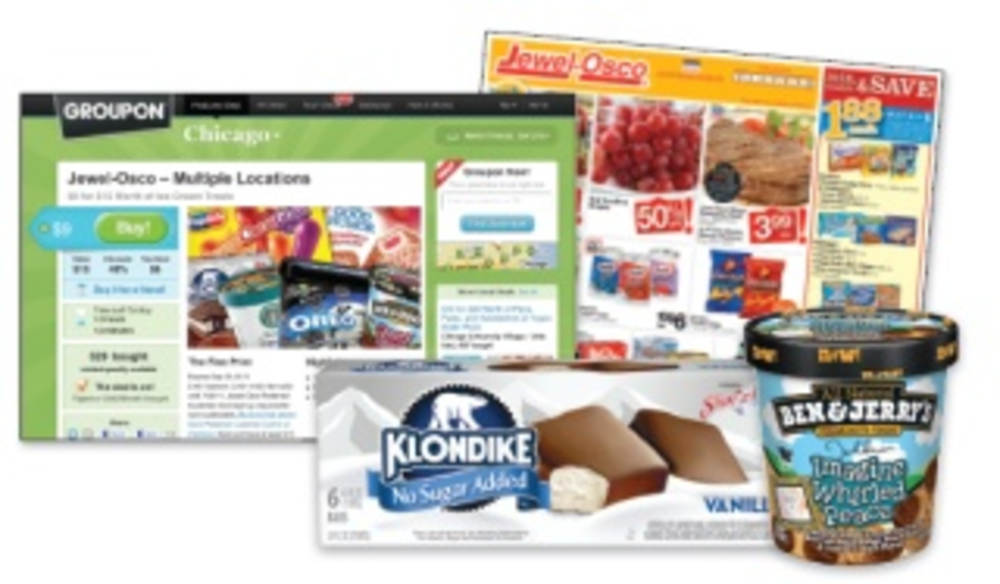While consumer packaged goods (CPG) marketers have not embraced digital marketing strategies as quickly as marketers in other sectors, that looks poised to change. Through new initiatives ranging from social couponing to stronger e-commerce offerings and enhanced labeling, CPG retailers and manufacturers are showing an eagerness to engage digitally oriented consumers and an awareness that they need to teach their old marketing tools some new tricks. ?
Frankly, the digital world has not been the most natural place for CPG marketing. With consumers comfortable browsing the grocery store aisles in person with coupons or a store circular in hand, trying to move them online has been a challenge.?
“If I was a brand manager at a CPG company, I’d have been reluctant to embrace digital until recently,” says David Berkowitz, senior director of emerging media and innovation at digital agency 360i, which works with a ?number of CPG clients and says decreasing costs of technology overall and increasing willingness of consumers to buy online has changed this. “There is a lot more that CPGs now are doing, and in general with e-commerce that’s making this whole area much more appealing,” he said.?
A May report from e-commerce consultancy etailing solutions and digital agency Catapult Marketing found that in the previous six months, 49% of online shoppers purchased personal care products online, while 40% bought food and 38% purchased household products, typically about once a month.?
One factor encouraging consumers to shop for CPG products online is convenience. ?
“Convenience drivers are starting to move stock up. Why lug a big thing of dog food or diapers when I can have it delivered to my door?” says Jason Katz, EVP and general manager of etailing solutions. ?
Government-driven marketing pivots on engagement. Because the process to attain a government contract can take longer than 12 months, b-to-g companies have increasingly adopted digital marketing as a means to remain top-of-mind with their targets.
Online CPG sales are expected to reach $16 billion by 2012, according to The Nielsen Co., up from $12 billion in 2010. Though this is a fraction of the $475 billion total predicted value of the market, retailers and ?manufacturers are making moves to capture this growing segment.?
Amazon recently purchased Quidsi, owner of Diapers.com and Soap.com. Walgreens has purchased Drugstore.com, and Wal-Mart Stores has moved toward a multichannel ?approach aimed at growing the company’s online CPG offerings. Ryan Charles, former head of mobile at Zagat Survey, recently launched Consmr, something of a Yelp for CPG, which allows consumers to search product categories to get suggestions and recommendations from other users. ?
As CPG brands get more comfortable with social media, they have also begun opening up to social couponing. In April, General Mills partnered with Groupon to offer $40 worth of products for only $20, with 4,500 samplers selling out within hours. ?
At the end of July, Unilever offered a Groupon promotion for the first time, partnering with Supervalu grocery for “Summer of Ice Cream,” which allowed shoppers to pay $9 for $15 worth of Ben & Jerry’s, Popsicle, Good Humor or Klondike products at any Jewel-Osco grocery store. To receive the deal, participants had to enter their Jewel-Osco Preferred Customer Card numbers, directly loading value onto the cards.?
“It took time to develop a Groupon promotion that would work in a retail grocery setting,” says Kat Kozitza, director of interactive and direct mail marketing at Supervalu, which owns Jewel-Osco. “We hope the program generates customer excitement that helps drive sales in our stores.”?
Of course, traditional couponing continues to play a major role in CPG marketing. According to the “US Mid-Year 2011 Consumer Packaged Goods (CPG) Coupon Facts Report,” released by NCH Marketing Services, coupon use increased 2.9% over the first half of 2011 compared with the same period in 2010, even though coupon distribution actually decreased 6.2%.?
Couponing remains overwhelmingly traditional in the CPG sector, with the largest share of coupons (89.6%) allocated to free-standing inserts (FSI) in newspapers and shared mail delivery methods — a 2.1% increase compared with a year ago. ?
“Marketers have different objectives for their different programs,” says Charles Brown, VP of marketing at NCH Marketing Services. “An FSI in a Sunday newspaper reaches millions of consumers, while a digital promotion can be more targeted.” ?
CPG brands are developing their own mobile apps as well, sometimes tied specifically to the shopping experience and at other times tangentially related to the product itself. Deodorant brand Lynx/Axe‘s Lynx Stream is one of the latter, allowing users to pull together all the tweets, photos and other postings around a particular party or event. ?
Chobani, a Greek yogurt brand marketed to children and their mothers, recently introduced the “Champlify” mobile app, featuring games and activities that parents can play with their children, as well as augmented reality “Champvision” lids on products that consumers can activate with their ?mobile phones.?
Retail technology company Mercatus launched the mobile app Concierge at the beginning of the year, which allows customers to locate specific products in-store, plan meals and generate recipe lists while also ?accessing digital coupons and weekly fliers. ?
“We try to build the intelligence to present the right ad at that time and place,” says Sylvain Perrier, COO of Mercatus. “If you’re driving by a store with your mobile phone and it’s 4:30 in the afternoon, why wouldn’t you consider an ad for ready-made chicken with a two-liter bottle of Coke?”?
360i’s Berkowitz expects to see social and mobile marketing become more central to shoppers’ experience in brick-and-mortar CPG stores. “What I really wonder is, will technology keep getting so good that you can actually scan a store aisle for the products that your friends like, with a product label that says, ‘Five of your friends recommend this’?” asks Berkowitz. “It’s a bit like Minority Report, but the technology is already ?almost there.”







